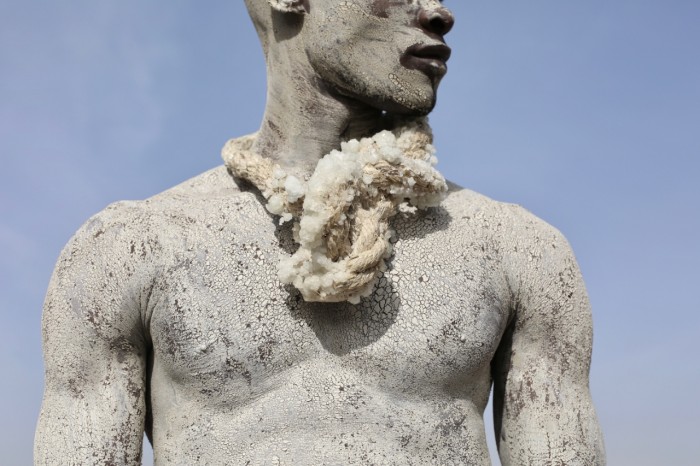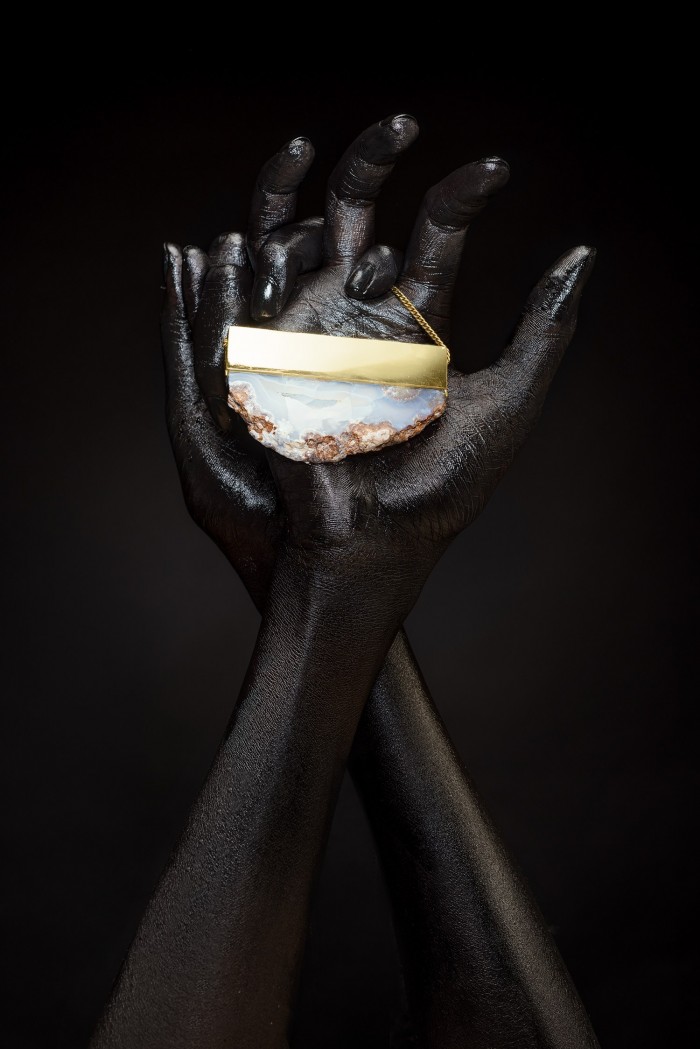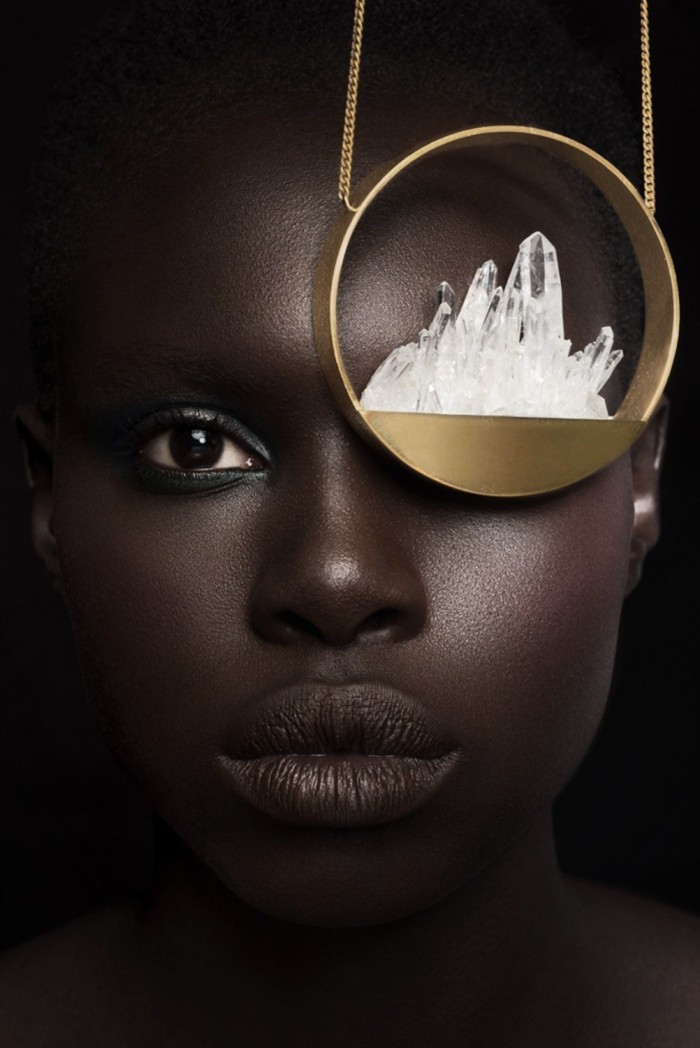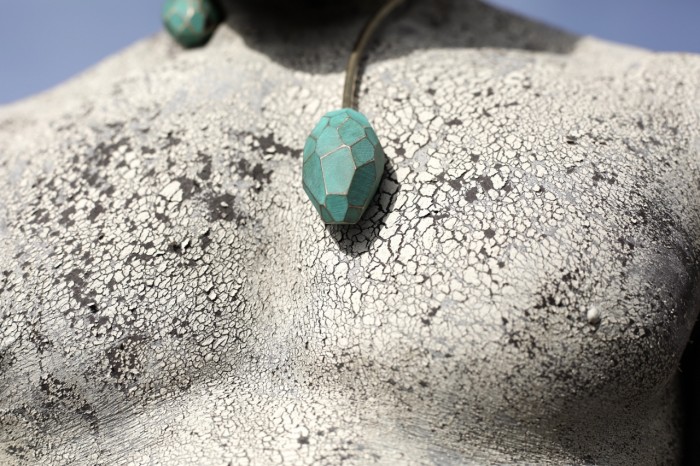I’m seated in a café in one of Cape Town’s busiest streets. The 80s hit, Owner of Lonely Heart, is playing loudly as a woman with chestnut-brown, curly hair walks in. I immediately notice the rather large question-mark-shaped necklace, fitted with white crystals at both ends, gracefully hanging around her neck. We make eye contact, and a big smile flashes across her face as she opens her arms to greet me.
This woman is Ami Doshi Shah, a Kenyan jeweller and silversmith whose work is unlike anything I’ve ever seen before. Her pieces tread a thin line between sculptural and wearable art, and for Shah this is exactly the way it should be. “It’s this idea of an object having a home on the body and that object taking on a very different character when it actually sits on the body,” says Shah.
Shah is a third-generation Kenyan whose family originally came from India. According to her, the value of jewellery in both these cultures is really significant.
In Indian culture, jewellery is often an asset given to a bride on her wedding day, however, when looking at Kenyan culture, jewellery is seen as more talismanic and signifying rites of passage. “I think that all of these components kind of fit together in the work that I do,” says Shah.
Many of the pieces that she designs and creates feature an array of natural minerals and materials. She mentions that this is because her inspiration comes from the natural, yet complex, beauty of Kenya. She uses available materials from Kenya with which to work.
One of her major collections, titled 'Salt of The Earth', looks at both the destructive and beneficial properties of salt. “[The project] started off as this type of postcolonial tale, and used one material to illustrate very different aspects of colonialism, as well as I suppose what we were going through as a country or what we have been through,” says Shah.
The collection features hessian and leather materials that have been placed in a hyper- concentrated salt solution to create crystallised salt objects. Other pieces underwent processes of patination, where a solution of cupric nitrate and salt is applied in layers over brass to almost create a second type of eroded skin.
According to Shah, salt is such a complicated and intriguing mineral. It was once used as a currency, and therefore also became a source of power. It is a mineral that can be so destructive, yet is so essential to most living things on earth. “For me it’s always about this juxtaposition of materials, and using them in very unexpected and unusual ways,” she says.
Her Salt of the Earth collection recently debuted at the London Fashion Week, as part of the International Fashion Showcase. Among the 16 designers chosen to showcase their work, Shah was the only jewellery designer selected.
The decision to become a jewellery designer was only made during the later stages of Shah’s university studies. However, according to the jeweller, when she graduated at the tender age of 21, she was much too young to start her own brand.
“I think at that time in Kenya there wasn’t really an appetite for the kind of work that I wanted to do and obviously I had to make a living,” she adds.
She spent about 12 years in the field of advertising, and at the end of that she realised that she was ready to go back to her first passion.
Five years on and she has established her own brand, I AM I, and moved into her own studio. Today her works have been worn by the likes of Theresa May, exhibited in London Fashion Week, and have graced the pages of British Vogue.
She mentions that most of the praise and support for her work come from British institutions and media, and she ascribes this to governmental support for artists being basically non-existent in many African countries.
“The government has very limited to no funding…We don’t get grants; we don’t get government grants for anything. I feel bad saying it, but it’s true. It’s the honest truth. It’s predominantly external organisations that are supporting the arts.”
“Having said that, the art scene and the creative scene and the creative industry in Kenya, Nairobi specifically, are really dynamic and quite vibrant…So much of what’s driving the creative industry is actually just the result of self-motivation and wanting to perfect one’s talents.”
Read More:
Would we trade gold and silver for jewellery made of light?
Subverting the gendered implications of wearable tech
Algorithmically designed jewellery by Nervous System









